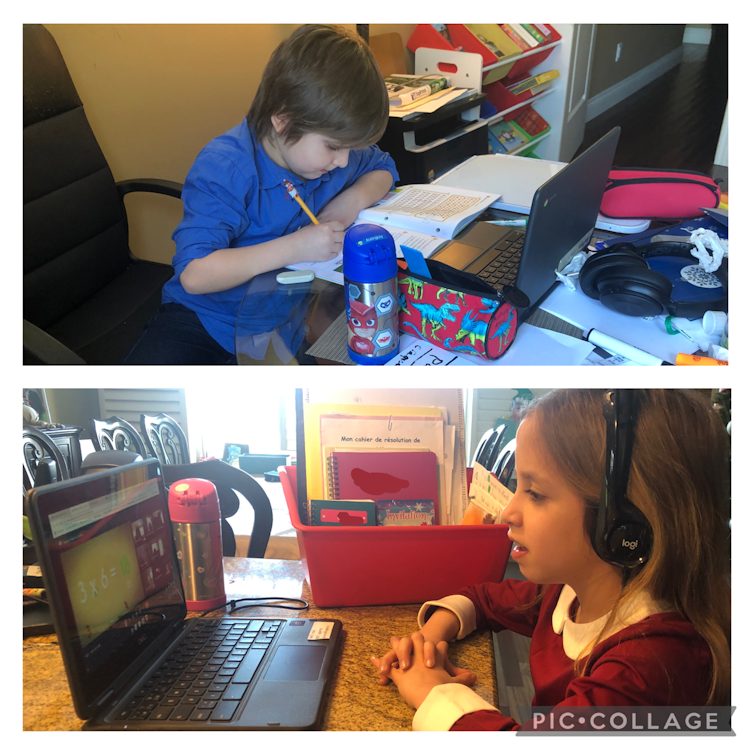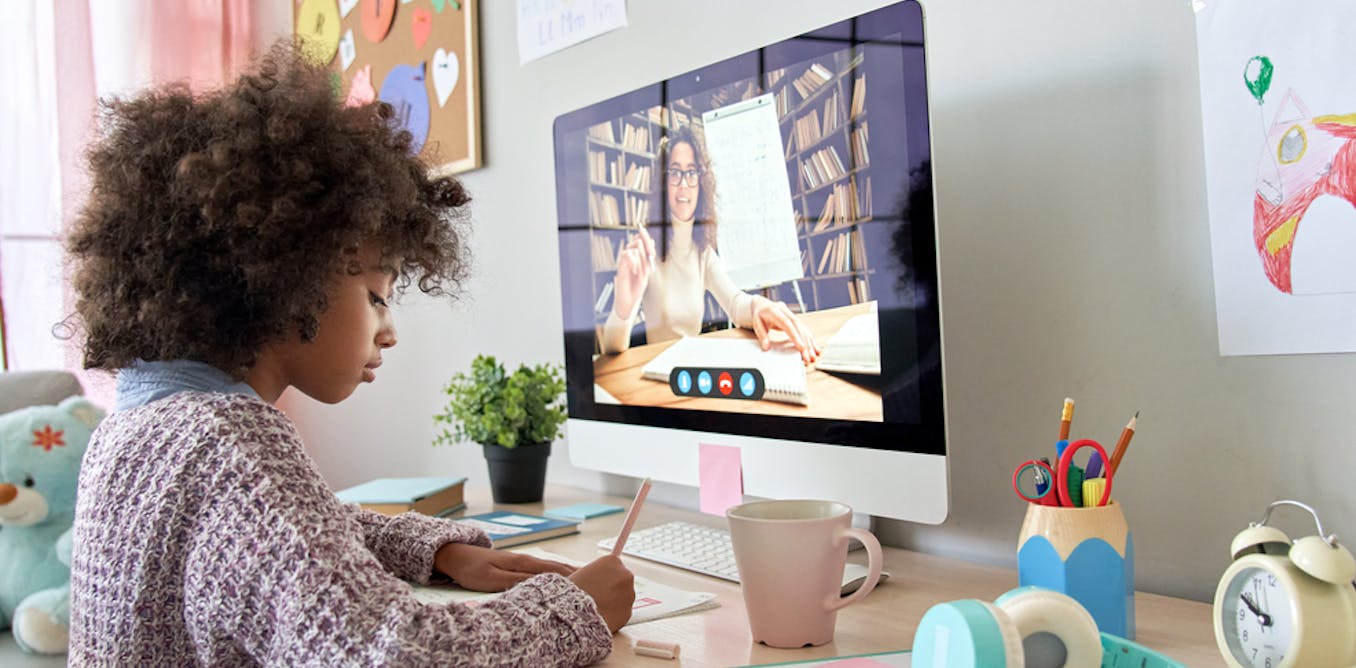Since the start of the Covid-19 pandemic in March 2020, different methods of distance learning have been introduced in the country. The two main modes that have emerged are synchronous virtual teaching (live, on-screen) and asynchronous virtual teaching (the teacher records his lesson in advance and you can watch it at any time, or he provides activities and homework that you can do at home (learning platform).
The teachers therefore had to review their teaching methods and switch to online teaching within a few days. L'Educational Foundationa foundation funded by the UK Department for Education, has compiled meta-analyses (synthesis of experimental research) to provide educational recommendations to guide distance learning.
Basically, it means that methods that are effective in face-to-face mode must be transferred to virtual mode. And that the teacher must not be overwhelmed by technologies.
We are a group of researchers in the field of school teaching, particularly interested in literacy, academic and social adjustment, and the dynamics of teaching and learning. Why care about this topic when the pandemic is over and students are in school? From our point of view, it is important to take stock of the last two years and document this for the future.
Manage your class
In synchronous virtual lessons, as in face-to-face teaching, it can be very easy to lose control of the class if effective behavior management is not carried out. Therefore, it is important to identify the expected behaviors (turning off the microphone, raising your virtual hand to take your turn, not interrupting the floor) and demonstrate exactly what is expected of students, which we know in technical jargon Call it “modeling.”
The students then practice the desired behaviors under the supervision of the teacher, who ensures that they receive feedback. Inappropriate behavior that interferes with teaching and learning cannot be tolerated, but some can be illustrated by the teacher with humor and counterexamples to avoid their occurrence. When expected behaviors are adopted by students and virtual classroom management works well, teaching becomes possible.

(Isabelle Carignan), Provided by the author
As part of online teaching, modeling can take more time. It is not always possible to see what students are writing. Therefore, it is important to ask questions to understand how they work and to check their learning. Therefore, it is appropriate to explain and re-explain it.
An inadequate platform
Google Classroom is one of the free learning platforms that schools use to create activities digitally. This platform is interesting for integrating teaching material, but not necessarily for synchronous teaching in real time. All too often class time is spent on logistics, which is a waste of class time.
For example, as part of a study we conducted on virtual and in-person schooling during a pandemic, parents who mentioned to a researcher that a teacher used three 55-minute lessons to explain to children as young as two years olde Primary school year, how to get a document about it classroom. When a parent suggested projecting the document on the screen in presentation mode instead of each student having their own document on their computer, they responded, “I want the kids to learn to find the documents on my computer.” classroom »…
But what lessons have been learned here? Nobody! At this age, students don’t necessarily know how to navigate different platforms. The teacher also doesn't know what tabs are open on the student's computer, and each teacher has their own way of using the platform. In addition, the use of Google Classroom is anything but intuitive for students and parents.
Back to basics
Just because you teach online doesn't mean you have to rely on technology at all costs. Sometimes it's interesting, sometimes not so much. Share a video on the screen Just dance on YouTube for a physical education class, it's relevant. The children move and have fun dancing to different songs.
Otherwise, an easy way to avoid losing or regaining control is to use an erasable whiteboard, paper activity books, or printable sheets. Paper and pencil activities are very suitable for students, parents and teachers. Students already know their activity books and will not have any technical problems.
It's much easier to tell students to take their study book with them 1, 2, 3… with nougat in math than telling them to leave Google Classroom to find an XYZ document in a subsection of another subsection, where multiple ways to open it will appear. It's also easier – and much less stressful – for parents to answer their children's questions using a paper notebook. They then feel more competent and confident in helping their children learn. The documents on Google Classroom (which is basically empty because the teacher builds the platform according to his planning) or another learning platform such as: Zorbit in mathematics or Boukili B. when reading, are more useful for doing homework or repeating material covered at school during the day.
When students attend synchronous virtual school, class time is too valuable to spend on learning one platform. The focus remains on teaching and learning.
Learning a web platform should be done in the classroom with students face-to-face so that the teacher can ensure their understanding before the virtual lesson takes place. We must avoid at all costs making the use of technology more complex in order to minimize wasted time and maximize teaching and learning opportunities. To achieve this, the use of simple means can facilitate the implementation of more effective teaching that children so much need! Why make it complicated when it can be simple?

